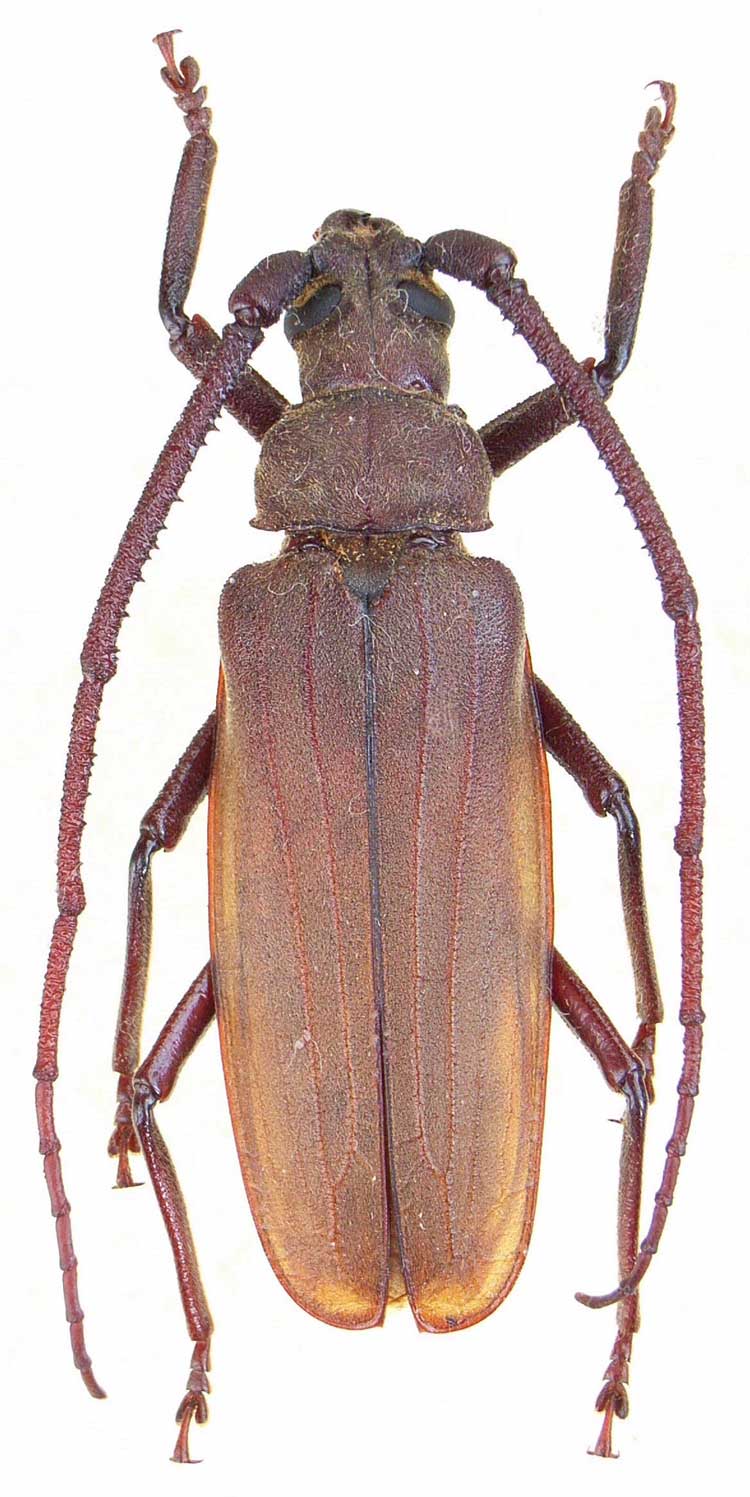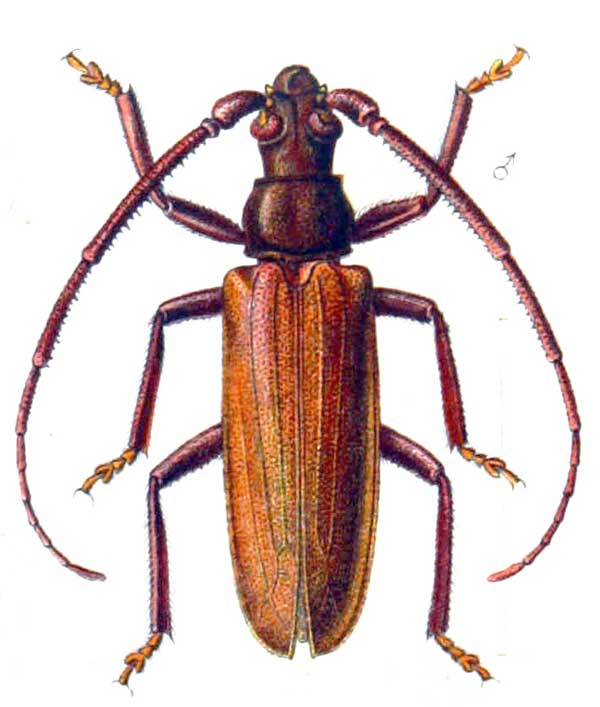
Aegosoma scabricorne
Superregnum: Eukaryota
Regnum: Animalia
Subregnum: Eumetazoa
Cladus: Bilateria
Cladus: Nephrozoa
Cladus: Protostomia
Cladus: Ecdysozoa
Cladus: Panarthropoda
Phylum: Arthropoda
Subphylum: Hexapoda
Classis: Insecta
Cladus: Dicondylia
Subclassis: Pterygota
Ordo: Coleoptera
Subordo: Polyphaga
Infraordo: Cucujiformia
Cladus: Phytophaga
Superfamilia: Chrysomeloidea
Familia: Cerambycidae
Subfamilia: Prioninae
Tribus: Aegosomatini
Genus: Aegosoma
Species: Aegosoma scabricorne
Name
Aegosoma scabricornis Scopoli, 1763
Vernacular names
Deutsch: Körnerbock
References
Tribe Aegosomatini: Aegosoma scabricornis (Scop., 1763) - scanography by Szczepan Ziarko

Aegosoma scabricorne
Aegosoma scabricorne is a species of long-horned beetles belonging to the family Cerambycidae.[1]
Aegosoma scabricorne, male and female. Museum specimen
Synonyms
Cerambyx eques Voet, 1778
Cerambyx scabricornis Scopoli, 1763
Megopis (Aegosoma) scabricornis (Scopoli, 1763)
Megopis scabricornis (Scopoli, 1763)
Aegosoma scabricornis (Scopoli, 1763) (misspelling)
Oegosoma scabricorne (Scopoli, 1763) (misspelling)
Distribution
This species is present in Central and Southern Europe and in the Middle East (Iran, Caucasus).[2][3][4]
Description
Aegosoma scabricorne can reach a length of 25–52 millimetres (0.98–2.05 in).[5] It is one of the biggest long-horned beetles in Europe. Body is elongated, finely pubescent, of a reddish yellow color. Head is narrowed behind the eyes. Antennae are composed by 11 segments, rough in the male. Prothorax is narrowed forward, obtusely dentate at the basal angle. Elytra show two weak longitudinal ribs. In males the antennae reach the extremity of the body, while in the females they are a little shorter than the body. The abdomen is glabrous, with a protruding oviduct.[6]
Biology
Adults can be found from June to August. These long-horned beetles are polyphagous in various deciduous trees (Juglans, Castania, Corylus, Populus, Platanus, Tilia, Malus). Larvae live in the trunk of old trees. Life cycle lasts at least three years.[4][6][5]
References
Biolib
"Fauna europaea".
"Map on ARGE SWD Koleopterologen" (in German). Archived from the original on 2018-10-31. Retrieved 2019-09-18.
Johannes Reibnitz. "Die Käfer-Fauna Südwestdeutschlands - ARGE SWD Koleopterologen" (in German). Archived from the original on 2018-10-19. Retrieved 2020-06-09.
Michal Hoskovec; Martin Rejzek. "Cerambycidae de la région Ouest-Paléarctique, 2006".
F. Picard, Coléoptères. Cerambycidae (in French) Paris, P. Lechevalier, coll. « Faune de France », 1929
Retrieved from "http://en.wikipedia.org/"
All text is available under the terms of the GNU Free Documentation License

